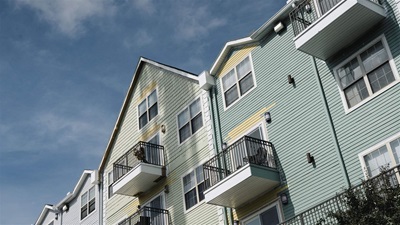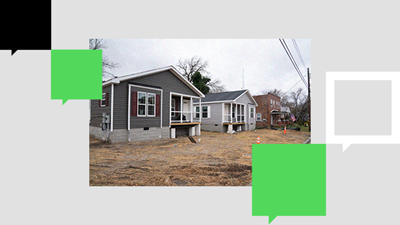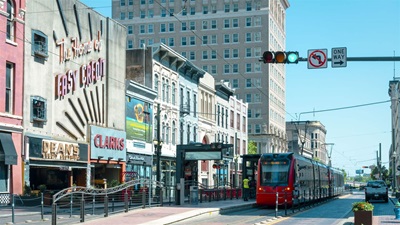One Solution to D.C.’s Housing Shortage Is Hiding in Plain Sight

Converting office buildings into apartments is an appealing way to deal with the combination of a nationwide office glut and a housing shortage, but it’s time to admit that high conversion costs have made such renovations too expensive to make a big dent in either problem.
The good news is that there’s something that works far better than converting empty office space into individual apartments: converting that space, instead, into dorm style-housing.
That’s especially true in Washington, D.C. Despite having well-designed local regulations covering office-to-residential conversions, the city needs more housing amid its high rents, high office vacancy rate, and high homelessness rate. Dorm-style housing differs from regular apartments because it’s made up of private, small units inside the building’s perimeter with shared spaces in the middle. And these dorm-style microunits cost less than half as much to build as converting offices into regular apartments.
New research from The Pew Charitable Trusts, where I lead housing policy research, and the architectural firm Gensler delved into the viability of office to co-living conversions in various cities, including D.C. The key to making these conversions work is leaving the plumbing as is in the center of each floor. That means that kitchens, laundry, and individual bathrooms would be shared, just as they are in offices and college dorms. Daily cleaning of these shared spaces is already baked into the building’s operating costs, as is 24-hour front desk security. Residents would have keycard access only to their own floor, just as in a modern office building. In addition to the low price and central location of a dorm-style conversion, a gym and ground-floor retail would add to the appeal.
This housing option, which has been popular in places where it’s been tried—including Singapore, Berlin, and Seattle—is perfect for our city’s young, sometimes mobile population; D.C. was one of the top destinations for Gen Z in 2024. And having smaller spaces with more efficient layouts means that more of them fit in a building—530 such units would fit over 10 residential floors, according to our study, compared with only about 160 regular apartments.
What’s more, these dorm-style conversions save time and use fewer resources by keeping the existing building shell while avoiding the air pollution and environmental damage of demolition.
And about that cost differential? Unlike the $400,000-plus per unit it usually costs to build a centrally located, affordable studio apartment in D.C., it would take as little as $150,000, depending on unit size, to create each microapartment in an existing office building. The rent for these dorm-style units would be about $1,000 per month—less than half of the city’s current median rent of more than $2,100. That’s affordable to someone earning $40,000 per year, or roughly 40% of the area’s median income.
That’s significant in a region where rents have recently risen faster than in most metropolitan areas— a whopping 12% last year. Hotel, restaurant, and museum workers often struggle to afford housing in D.C.; with upward of 100,000 employees, D.C.’s tourism industry thrives year-round and has already surged past pre-pandemic levels. But many people who work in hospitality can’t afford to live anywhere near their jobs. The same is true of young Capitol Hill staffers, many public school employees, and people who work in hospitals and doctor’s offices. Employers could lease a whole floor to help attract such workers.
Local D.C. laws offer additional advantages for building dorm-style housing compared with regulations in many other cities. For example, parking mandates could make these conversions to dorm-style housing infeasible, but D.C. has wisely eliminated those in the downtown zone. Mandates for operable windows sharply raise costs because office buildings constructed since air conditioning became widely available usually have fixed windows, but D.C. allows these windows for sleeping units, which is what the dorm-style units would be. And while some cities require rezoning for the conversions, D.C. does not.
And of course, our downtown, with a 20% office vacancy rate, needs revitalization.
Mayor Muriel Bowser (D) has prioritized repurposing unused office space downtown and revitalizing it with new residents and businesses. She has set a goal of increasing the number of residents living downtown by 100,000, starting with 15,000 over the next five years. Using modern office buildings that already meet existing building codes is a great place to start.
But for conversions to microunits to happen in D.C., developers need to give this model a try. They’ll also need modest subsidies from the city, which would be much lower than subsidies the city offers builders for the construction of similarly affordable conventional apartments.
America’s housing shortage requires new solutions; the same approach year after year has resulted in record housing costs and record homelessness. For thousands of D.C.-area residents, downtown dorm-style units would be a game-changing option.
Alex Horowitz directs The Pew Charitable Trusts’ housing policy initiative.
This piece originally ran in Greater Greater Washington on July 9, 2025.











